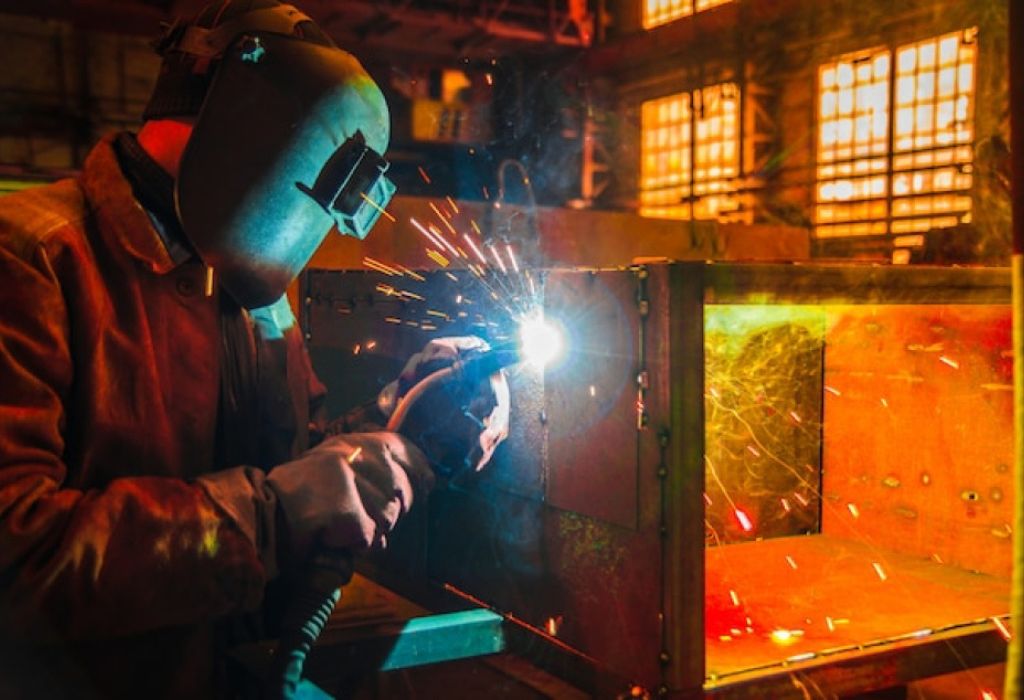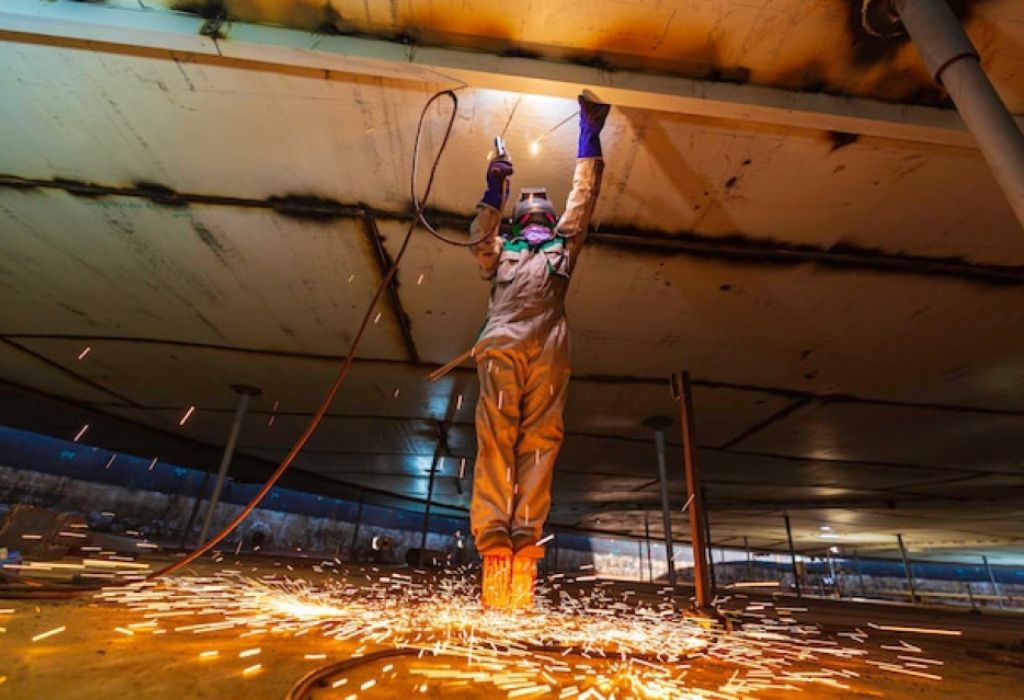Imagine standing on the tracks at dawn, sparks flying as steel rails are joined with precision.
Railroad welders play a vital role in keeping freight and passenger trains moving safely across the country.
Yet one question often sparks curiosity among those considering this career: how much does a railroad welder make?
For many, the appeal lies not only in working with their hands but also in earning a stable income.
The demand for skilled welders continues to grow, with the U.S. Bureau of Labor Statistics reporting that more than 42,600 welding jobs are projected to open each year through 2032 (BLS).
This strong outlook highlights both the necessity of the trade and the earning potential it can offer.
At the same time, salary expectations vary widely depending on factors like experience level, employer, location, and union membership.
Some railroad welders earn close to the national welding median of $51,000 annually, while top earners can push past $70,000 or more with overtime and specialized skills (BLS).
Understanding these variations is key for anyone interested in pursuing a career along the rails.
From base pay to overtime opportunities, and from union benefits to regional pay scales, each element shapes the final paycheck.
What Is a Railroad Welder & What Do They Do?

Railroad welders specialize in repairing and maintaining the steel rails that form the backbone of the transportation system. Their work ensures that trains carrying goods and passengers travel smoothly and safely across thousands of miles of track.
This role goes beyond basic welding, requiring a unique combination of precision, endurance, and knowledge of rail infrastructure. From replacing worn rails to reinforcing joints, railroad welders keep one of the nation’s most critical networks operational.
What is a railroad welder?
A railroad welder is a skilled tradesperson who joins, repairs, and maintains steel rails using specialized welding techniques.
What are the main duties of a railroad welder?
They weld track joints, repair cracks, rebuild worn areas, and inspect seams to maintain rail safety.
Which welding techniques are used in this field?
Common methods include stick welding, thermite welding, and arc welding tailored to heavy rail applications.
How does this job differ from general welding work?
Railroad welding often requires travel, outdoor conditions, and specialized tools designed for large-scale rail projects.
Why is the role so important for rail safety?
Strong welds prevent track failures, reduce derailment risks, and extend the lifespan of critical rail infrastructure.
How Much Does a Railroad Welder Make?
Railroad welder salaries vary, but several reliable sources give a clear picture of the earning potential. As of September 2025, average hourly pay is around $23.59, with annual salaries averaging $49,074 according to ZipRecruiter (ZipRecruiter).
Glassdoor estimates total pay around $72,673 per year, with a base of roughly $59,501. The Bureau of Labor Statistics notes that the median wage for welders overall is about $51,000 per year (BLS).
What is the average hourly pay for a railroad welder?
It is roughly $23.59 per hour, though higher rates are common in certain regions or companies.
What is the median annual salary for railroad welders?
Most earn between $49,000 and $60,000, with potential for more through overtime.
What is the salary range (low to high)?
Wages typically range from about $20 per hour at entry level to more than $30 per hour for experienced welders.
How do top earners compare?
Top railroad welders may exceed $70,000 annually when factoring in overtime and bonuses.
How does this compare to general welders?
Railroad welders often earn slightly more due to specialization, travel requirements, and union contracts.
Key Factors That Affect Railroad Welder Pay
Railroad welder earnings are shaped by many variables. Understanding them helps explain why two welders in different states may earn vastly different salaries.
Experience level is one of the most important factors. Entry-level welders earn less than those with decades of hands-on expertise in rail infrastructure.
Location also plays a major role. States with higher costs of living or more extensive rail networks often pay more.
Employers influence pay through benefits, union agreements, and pay scales tied to company policies. Major rail companies usually offer better compensation than smaller contractors.
Additional earnings often come from overtime, hazard pay, and night shifts. These premiums significantly boost overall income.
Certifications and specialized skills also raise salaries. Welders who master thermite welding or rail-specific techniques are in higher demand.
How does experience impact salary?
More years in the field typically increase hourly pay and annual compensation.
Does location make a big difference?
Yes, wages are higher in states with greater demand and higher living costs.
Does working for a major railway improve pay?
Large companies like BNSF and Union Pacific often offer higher wages and stronger benefits.
Do overtime and bonuses increase earnings significantly?
Yes, they can add 20–30% or more to base income.
Do certifications or special skills matter?
Yes, advanced training and specialized techniques often lead to higher pay opportunities.
Salary Breakdown by Employer & Region
Railroad welder salaries differ not just by state but also by employer. Pay rates at leading rail companies show how competitive the field can be.
At BNSF Railway, welders report hourly pay between $23 and $35, with median earnings around $29 (Glassdoor). Union Pacific reports average hourly wages of $28.48, while CSX shows average pay around $30.46 (Indeed, Indeed).
Railcar welders working for companies like GATX report hourly rates between $23 and $33 (Glassdoor). Regional variation also matters, with urban hubs often offering higher pay than rural locations.
Which rail companies pay top wages?
Companies like CSX and Union Pacific frequently pay at the higher end of the scale.
What is a typical pay rate in major metros?
Wages may exceed $30 per hour in cities with strong demand and higher living costs.
How does rural vs urban location affect pay?
Urban and industrial areas generally pay more, while rural areas offer lower rates.
Do railcar welding jobs pay differently?
Yes, railcar and shop welding roles may vary slightly depending on employer and demand.
Can moving states boost earnings?
Yes, relocation to higher-paying regions can increase annual salary significantly.
How to Increase Your Earnings as a Railroad Welder
Maximizing income requires a mix of strategy and skill. Welders who continually improve qualifications and seek the right opportunities often earn more.
Pursuing certifications in specialized techniques adds immediate value to a welder’s profile. Employers reward this expertise with higher wages.
Relocation to high-paying states or major rail corridors can raise annual earnings. Many welders accept temporary travel assignments for premium pay.
Overtime remains one of the fastest ways to boost income. Rail projects often extend into nights and weekends, offering higher hourly rates.
Joining a union provides negotiated benefits, wage scales, and protections that non-union roles may not offer.
How important are certifications?
They are critical for advancing into higher-paying positions.
Is it better to move to a high-pay region?
Yes, relocating can substantially increase earning potential.
Can specialization help?
Yes, advanced welding methods allow welders to command premium wages.
Is overtime worth pursuing?
Yes, it often adds thousands of dollars to yearly earnings.
What about union membership?
Union membership frequently improves wages and benefits compared to non-union roles.
Challenges, Risks & Tradeoffs

While the salary is appealing, railroad welding is not without challenges. This career demands resilience and attention to safety.
The work often occurs outdoors, exposing welders to extreme heat, cold, and long hours. Physical strain and fatigue are common.
Hazards include burns, sparks, heavy machinery, and fumes. Welders must follow strict safety guidelines to prevent injury.
Job consistency can be affected by seasonal maintenance schedules or funding cycles. Periods of downtime may occur.
Frequent travel or overnight assignments can affect personal life and balance. The rewards come with sacrifices.
Are there safety risks?
Yes, welders face burns, fumes, and physical hazards daily.
Is work always consistent?
No, rail maintenance schedules and budgets can cause fluctuations.
Does travel or being away from home reduce quality of life?
Yes, extended assignments can disrupt personal routines.
Do injuries or health issues affect longevity?
Yes, long-term strain may shorten career duration without proper precautions.
Are there barriers to entering the field?
Yes, training, certifications, and physical requirements can limit entry.
Future Trends & Job Outlook
The outlook for railroad welders remains steady. Infrastructure investments will likely maintain demand for skilled professionals.
The Bureau of Labor Statistics projects welding jobs to grow about 2% between 2024 and 2034 (BLS). Though modest, demand for railroad welders may remain stable due to ongoing maintenance and upgrades.
Technology may introduce automated welding systems, but complex track work still requires human expertise. Those who learn advanced equipment could earn more.
High-speed rail projects and modernization efforts may create specialized niches for railroad welders. Future roles may emphasize inspection, robotics, and precision techniques.
What is the projected job growth?
Growth is expected at around 2%, with demand tied to infrastructure projects.
Will automation reduce demand?
Some tasks may be automated, but specialized skills will keep human welders essential.
Does infrastructure investment boost demand?
Yes, government spending on rail improvements supports steady job opportunities.
Will new technology change pay scales?
Yes, welders skilled in robotics and automation may command higher pay.
Are there emerging niches within rail welding?
Yes, roles in high-speed rail and advanced inspection are growing.
Conclusion
Railroad welders hold one of the most critical jobs in the rail industry. Their skills ensure safe, efficient transportation across the nation.
So, how much does a railroad welder make? Average earnings hover between $49,000 and $60,000 annually, with top welders surpassing $70,000 or more through overtime, location, and specialization.
Salary depends on experience, location, employer, and certifications. By understanding these factors and pursuing opportunities strategically, welders can maximize their earning potential.
For those ready to pursue the career, the future remains strong. Railroads will always need skilled welders to maintain the steel pathways that connect industries and communities.

I’m Darrell Julian, the founder, lead writer, and hands-on welding enthusiast behind ArcWeldingPro.com. With more than 15 years of real-world welding experience, I created this platform to share what I’ve learned in the field, in the shop, and in the heat of the arc.


